6. Shoot the Living and Pray For the Dead (Giuseppe Vari, 1971)
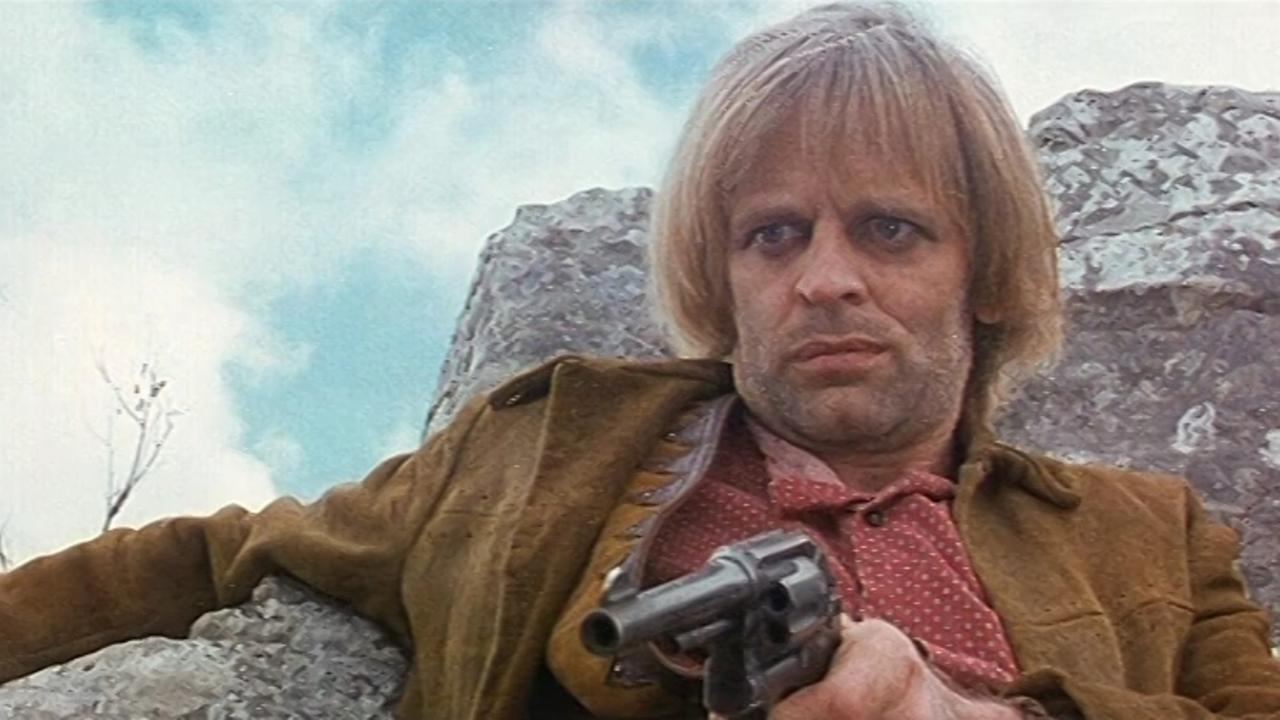
After stealing $100,000 worth of gold bars, Dan Hogan (Klaus Kinski) and his gang hideout in the Jackal’s Ranch stagecoach way station, holding the patrons hostage. Here, Hogan meets John Webb (Paolo Casella). Webb promises to guide the outlaws across the border into Mexico, in exchange for a share of the gold. But what is John Webb concealing?
Shoot the Living and Pray For the Dead is a minimalistic, merciless spaghetti western. Utilising few locations, most of the story takes place inside Jackal’s Ranch. This imbues it with the intimate feel of a stage play or a locked-room Agatha Christie mystery. Its impression is accentuated by its noteworthy folk-rock soundtrack. It was clearly an influence on Quentin Tarantino’s The Hateful Eight and he’s listed it as one of his favourite spaghetti westerns.
The maniacal Klaus Kinski continues to prove why he’s one of the most memorable, masterful actors of the 20th century, in spite of his chequered reputation. His animalistic, unhinged, cold performance is truly terrifying and imposing in a way which surpasses the fantasy of the screen, arresting the audience with wonder and shock. The movie’s original and tight screenplay engenders a criticism of capitalism and greed. At the same time, its portrayal of a hostage situation is interpretable as an allegory for the Vietnam War and, more broadly, the colonialism crumbling in the mid-20th century.
7. Four of the Apocalypse (Lucio Fulci, 1975)
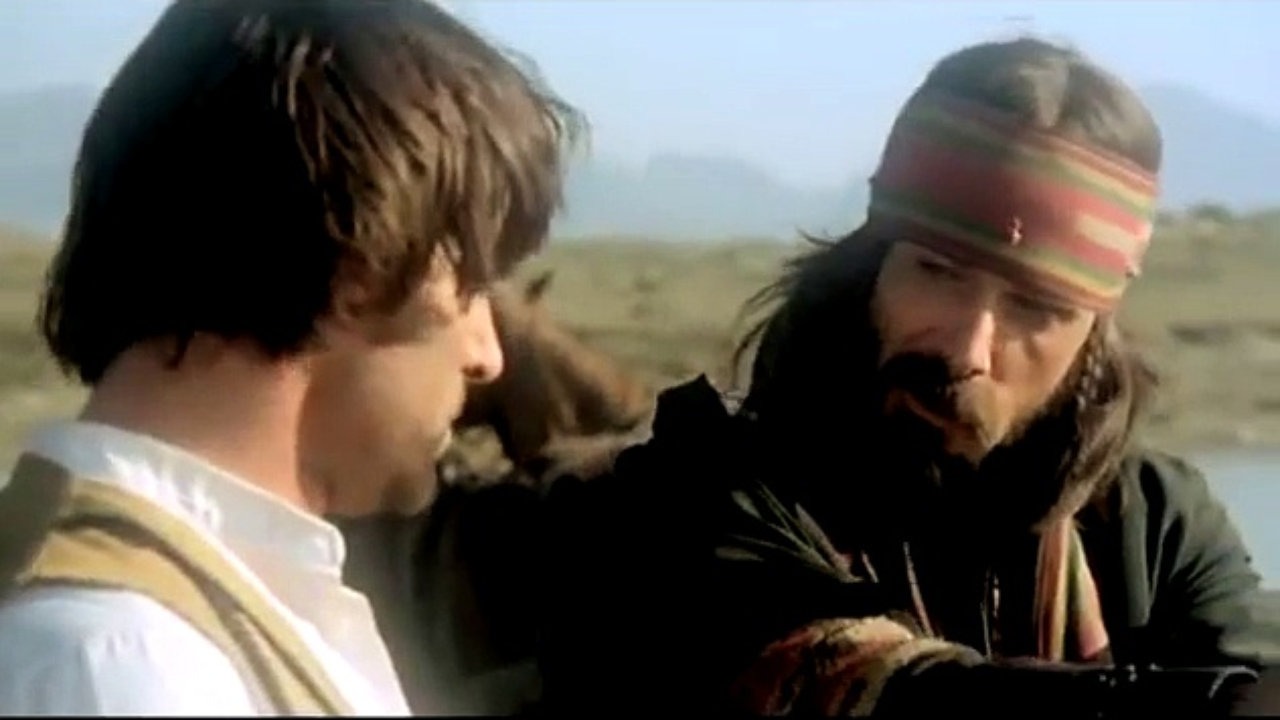
4 mismatched criminals (Fabio Testi, Lynne Frederick, Michael J. Pollard, Harry Baird) embark on a quixotic, violence-beset quest across the Utah desert to Sun City.
Four of the Apocalypse is a hippie spaghetti western, deploying zeitgeist psychedelic visuals. It was directed by Lucio Fulci, better-known as the maestro of the horror genre, creating classics like Zombie 2 (1979) and The Beyond (1981). It is 1 of 2 westerns that Fulci helmed, the other being Silver Saddle (1978). Four of the Apocalypse is his most tragic, emotional and humane picture, steeped in philosophical wisdom and painful truths. It also signifies the curtain on the heyday of the spaghetti western sub-genre.
The gifted Michael J. Pollard, known for his role in Bonnie and Clyde, encapsulates the film’s tonal balance between freewheeling countercultural excess and profound sadness. The story will appeal especially to those in-search of a western with substance, more concerned with drama and emotion than gunfights and adventure (though the film provides that too). In an era where women’s rights were often ignored, the narrative paints an empathetic portrait of a pregnant lady’s plight, as she weathers the unforgiving bloodlust and machismo of the west.
8. Mad Dog Morgan (1976)
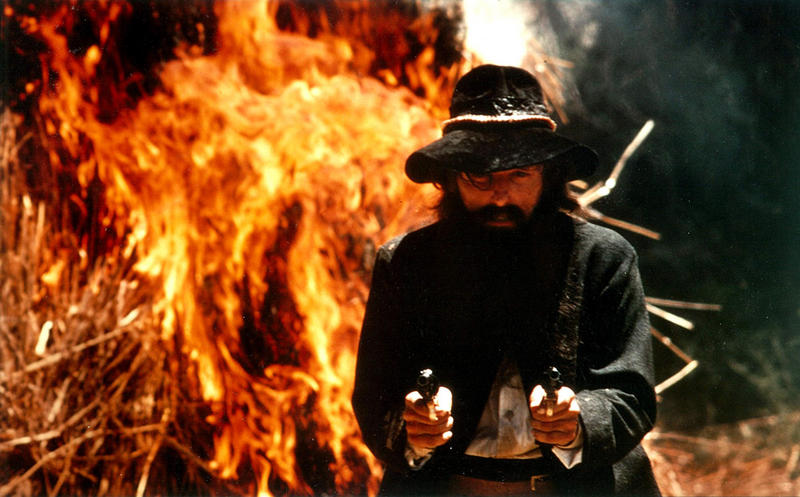
This ozsploitation meat pie western dramatises the escapades of real-life bushranger Dan Morgan in 1860s Victoria, Australia. Dennis Hopper plays Morgan, who resides in a cave in the bush with his partner in crime Billy (David Gulpilil). As they perpetrate a string of robberies, they’re hunted relentlessly by the Victoria police.
Mad Dog Morgan is one of the best examples of an Australian western. Firstly, in specific instances, it has strangely modern cinematography, decades ahead of its time. The poetic shots wouldn’t be out of place in a contemporary arthouse movie. Dennis Hopper is superbly cast and draws upon his real-life infamy, rebelliousness and hell-raising, demonstrating what an outstanding actor he was. With a flawless Irish accent, he exhibits a profound emotional range: mastering evocations of fear, melancholy and humour. In addition, 2 legendary Australian institutions co-star: David Gulpilil and Bill Hunter. Gulpilil also provided the film’s didgeridoo score.
The narrative criticises the bloodthirsty, destructive operations of the British Empire, so audiences may understand the tragic cost of colonialism. Like Frankenstein (1931), it aids in aligning the audience with the villain, due to its portrayal of unjust targeting. What is more, the screenplay substantiates how the tyranny of the penal system can cultivate criminality in a persecuted individual. It questions whether Morgan was simply a sadistic murderer, or whether his environment spawned this behaviour in him. Western fans are also ensured all the adventure and gory gunplay one desires from the genre.
9. A Fistful of Fingers (1995)
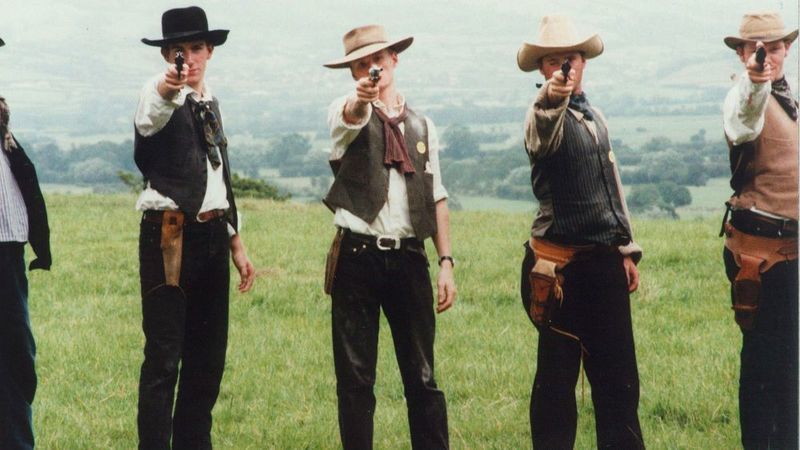
“The greatest western ever made… in Somerset.” This was the first feature of Edgar Wright, known for directing Shaun of the Dead (2004) and Hot Fuzz (2007). It follows a cowboy called No-Name who pursues an outlaw, The Squint (Oli van der Vijver), who killed his horse. It was produced on a very small budget in the southwest of England.
A Fistful of Fingers is a student parody film, which lampoons the tropes of Sam Peckinpah and Sergio Leone. While rough and amateurish, surprisingly, it’s unbelievably entertaining and a sterling comedy. This is evident in its never-ending flurry of jokes, be it in everybody riding hobby horses, the deliberate anachronisms, or the tongue-in-cheek dialogue.
Moreover, the ingenuity and inventiveness of every scene, where Wright manipulates action sequences for comedic effect, foretokens the detailed aptitude he would exhibit in his later works. A Fistful of Fingers is a very funny film that keeps the audience gripped throughout its runtime. Its goofy sendup of genre conventions is sure to delight western fans.
10. Dead For a Dollar (Walter Hill, 2022)
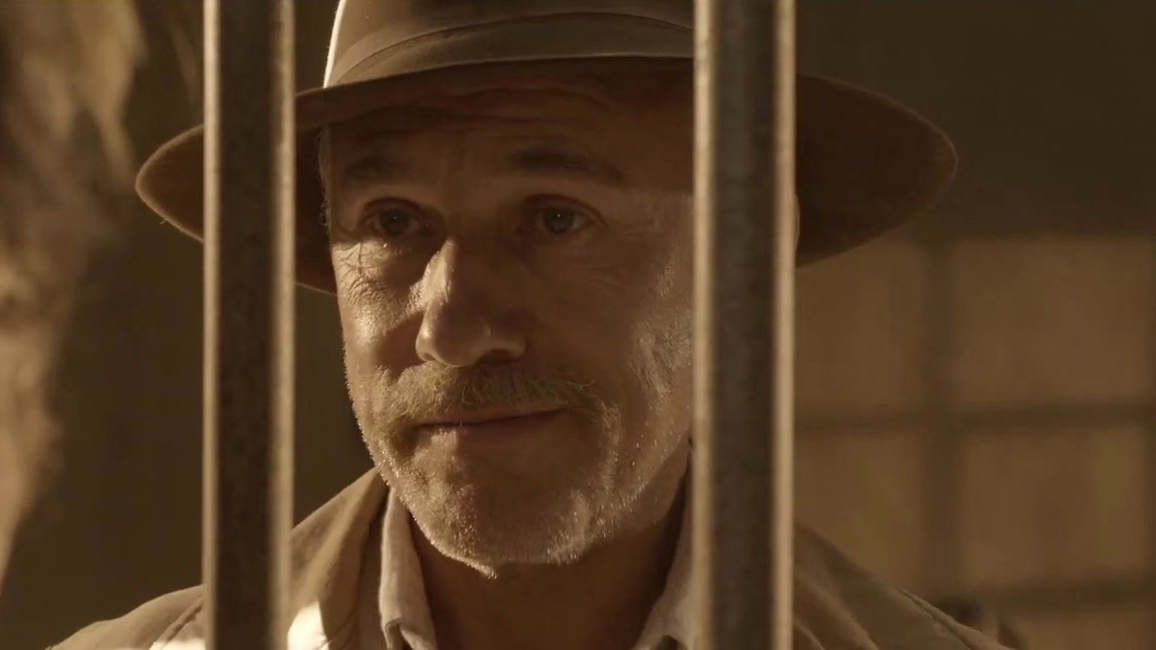
Bounty hunter Max Borlund (Christoph Waltz) is hired by businessman Martin Kidd (Hamish Linklater) to locate his missing wife Rachel (Rachel Brosnahan) in Mexico. Meanwhile, Max is pursued by robber and cardsharp Joe Cribbens (Willem Dafoe), whom Max previously had imprisoned. Warren Burke, Brandon Scott, Benjamin Bratt and Luis Chávez constitute the supporting cast.
Uniquely, Dead For a Dollar is colour-graded in sepia and uses anti-noir lighting, with minimal shadows. Of this choice, director Walter Hill elucidated: “my own experience in northern Mexico, in Chihuahua, is that you’re always conscious of the sun blazing away. I wanted the feeling of constant sunshine. It should look parched.”
Centrally, Rachel Brosnahan and Warren Burke contribute highly impressive, intelligent performances. Additionally, one of the movie’s decisive enhancements is found in the ever-remarkable titan Willem Dafoe, whose very presence could turn any production into a classic.
The screenplay manages to forge a fresh, exciting variation on a well-trodden genre, with equal measures of galloping plot and character study, imbued with feminist themes. Dead For a Dollar’s a western gem for the modern age, yet it also draws upon the vintage nostalgia of Walter Hill’s work from the ‘70s through the ‘90s.
This enrichment is noticeable in elements such as the upward wipe transitions, Old Hollywood framing and the director’s penchant for visceral gunfights. An especially momentous episode is when a gunman crashes into a hotel riding a horse, opening fire. What’s demonstrative is Hill’s creative talent has not faded in his later years – it’s as potent and exhilarating as it ever was.